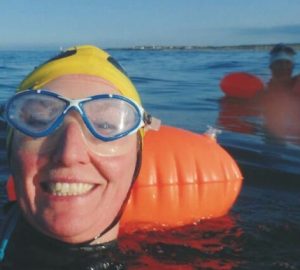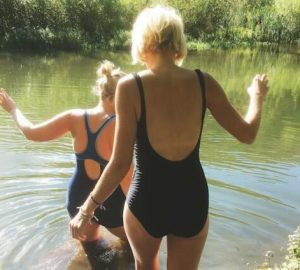Five things about swimming I wish I’d learnt sooner
1. Cold water is not as big a barrier as you think it will be
This might seem a strange thing to say from someone who has been hospitalised with hypothermia caused by swimming and is notoriously feeble in cold conditions, but hear me out. There are, I believe, two parts to swimming in cold water. These are (a) overcoming your reluctance to getting into cold water and coping with the first few minutes of immersion and (b) being able to sustain your core body temperature for an extended time in cold water. The two, in my experience, are not necessarily correlated. You can be good at one but not the other.
In the first few minutes of cold water exposure, your body goes through cold water shock. However, it only takes around 5 or 6 immersions for this response to reduce significantly. After that, getting into cold water is no longer the painful, gasp and panic-inducing experience it is the first time you try. It still hurts, but it’s bearable. Then, once your skin has cooled, the water, for a brief period, feels pleasant and tingly against your skin. You can feel it is cold, but you are not cold. All you need to do to cope with (and even enjoy) short cold water swims, is to do them frequently.
Keeping warm for an extended period while in cool water is a completely different challenge. While you can acclimatise to a degree, and train yourself to feel more comfortable while cold, your body size and shape play a much bigger role. Large, rounded people will stay warmer for longer than small lean ones.
My error was to confuse these two things. Knowing I struggle with keeping warm when in water for lengthy periods, I assumed I could not cope with the initial immersion period. A season of winter swimming has shown me that this is false and that brief dips (often less than 5 minutes) in cold water can be fun and don’t result in hypothermia.
2. It’s easier to swim a mile in open water than you first think
I grew up as a club swimmer. I raced events from 50m to 200m. In training, we rarely swam more than 400m without a break, even if it was just for a few seconds, and even being asked to swim 400m drew groans of dismay from the swimmers. Knowing how much you can make yourself hurt over 200m makes a 1500m swim (the longest recognised race distance in the pool) seem like the worst torture imaginable. Actually, when you swim 60 lengths at race pace in a 25m pool, it is.
Then I discovered open water swimming, where the shortest races are often 1500m or a mile. Panic! At least, initially. Then I discovered that swimming a mile in open water is easier than in the pool, in some ways, anyway. There are no lengths to count and the scenery is much better. You don’t need to change direction every 25m. And there are no records or personal bests to beat as the variability in conditions makes those things trivial. It didn’t take long before I was looking for 5km and 10km swims, and enjoying them greatly. Who would have guessed that long distance swimming could be such fun?
3. Good swimming technique takes time to develop but it’s worth the effort
Swimmers usually want to swim with good technique because it makes them faster and more efficient but there are other benefits too. Firstly, good swimming technique is usually kinder to your body and less likely to cause injury than poor technique – which is a fabulous bonus if you think about it. Imagine if to swim fast you had to sacrifice your long-term health? Secondly, swimming with good technique feels good. You feel strong and connected with the water. Thirdly, the process of learning about and practising good swimming technique is intrinsically enjoyable. The older you are, the less you can get away with sloppy swimming technique and the harder it is to fix it, so start now.
4. There are lots of ways to be a “good” swimmer
As a junior club swimmer, the way to be considered a “good” swimmer was to win races in the pool. Swimming was (and mostly still is) taught as a competitive sport rather than an enjoyable life-long healthy recreational activity. Out of the competitive arena there are a multitude of ways to be a good swimmer. You could:
- still be fast, but nobody cares that much;
- you can swim long distances, fast or slow;
- you can do amazing adventures;
- you can do cold water challenges;
- you can be a supportive and encouraging guide to other people taking their first steps into open water;
- you can know the best times and places to swim; or,
- you can make the best cake.
5. You don’t have to time and count everything
As a club swimmer, I used to count every length and constantly watch the clock. That has its place, and I still enjoy a good club-type training session – but you don’t need that all the time. Instead, allow yourself to enjoy the sensation of being in and moving through the water. How you feel, and making sure swimming feels good, is ultimately more important than how fast you swim – especially if you want to enjoy a lifetime of swimming-related health and fitness benefits. It’s definitely easier to stop counting and clock watching when you swim outside, but leave the GPS behind.
Image (c) Katia Vastiau







